Ground force: Simon Phipps puts British post-war public art in the frame
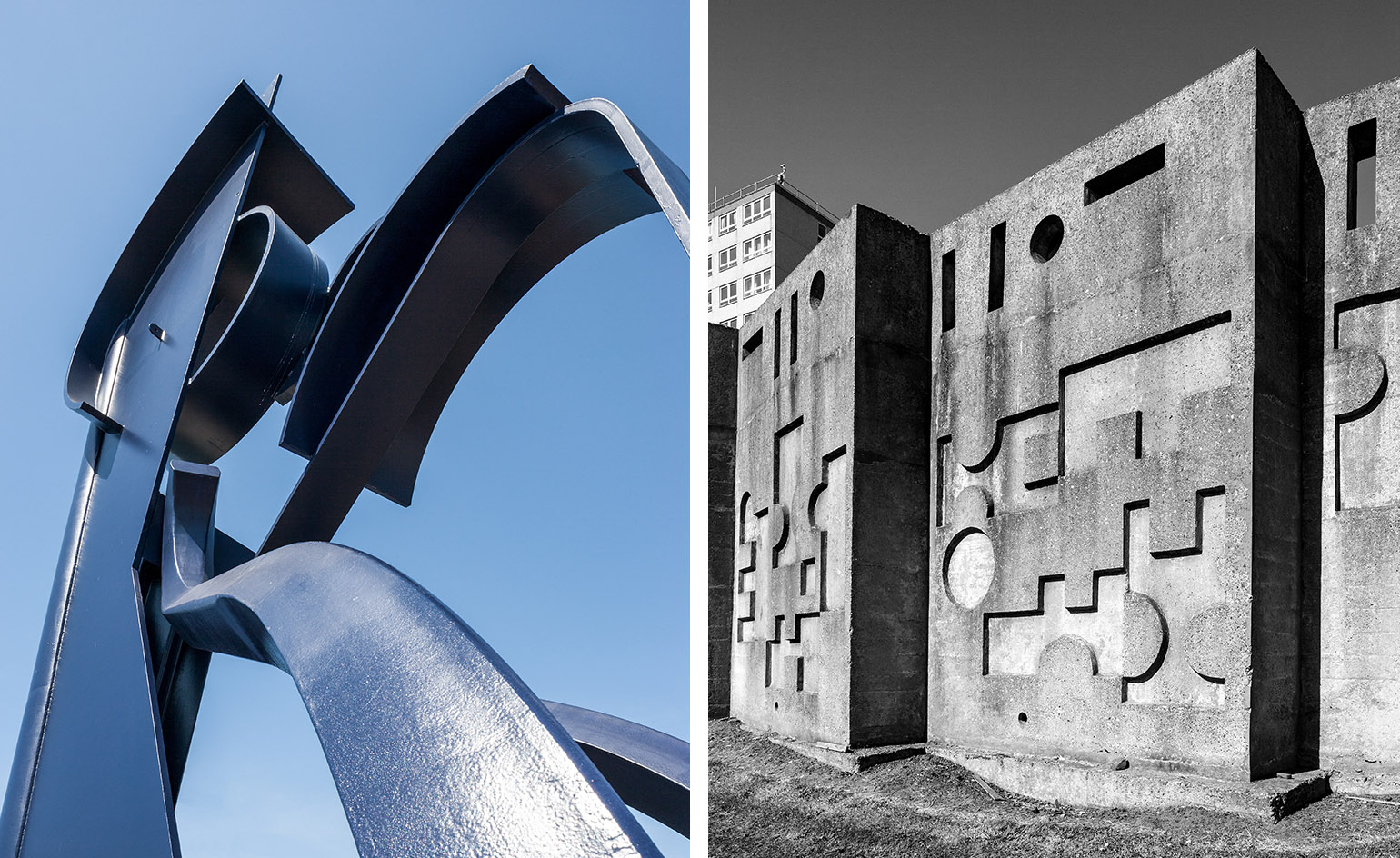
Tracey Emin once said that art is for everyone. The sentiment still resonates with British fashion designer Margaret Howell, who feels passionately about public sculpture. ‘It’s a gift to us all,’ she says. ‘It’s a pleasure to see art become part of a location, it really can enrich people’s lives.’
Last year, Howell took a trip to London's Courtauld Gallery to see an exhibition called ‘Out There: Our Post-War Public Art’. The show charted the conception and conservation of public artworks created in England between 1945 and 1985, and featured sculptures by the likes of Barbara Hepworth, Henry Moore and Elisabeth Frink. ‘It was just so impressive,’ she recalls. ‘That was a brilliant era, when modern pieces were more commonly commissioned for communal spaces.’
‘Out There’ inspired the concept behind Howell’s new exhibition, ‘British Post-War Public Art’, which is now on display at her brand’s Wigmore Street store. ‘I had seen some fantastic photographs that Simon Phipps had taken of British sculptures,’ she explains. ‘So, we asked him to document even more, especially for us.’ Above Ercol furnishings and small ceramic displays hang 18 of Phipps’ bold, texture-rich photographs of some of Britain’s most renowned public works, which remain unspoiled and in their original settings. ‘It’s a celebration of these wonderful sculptures as they are now,’ she affirms.
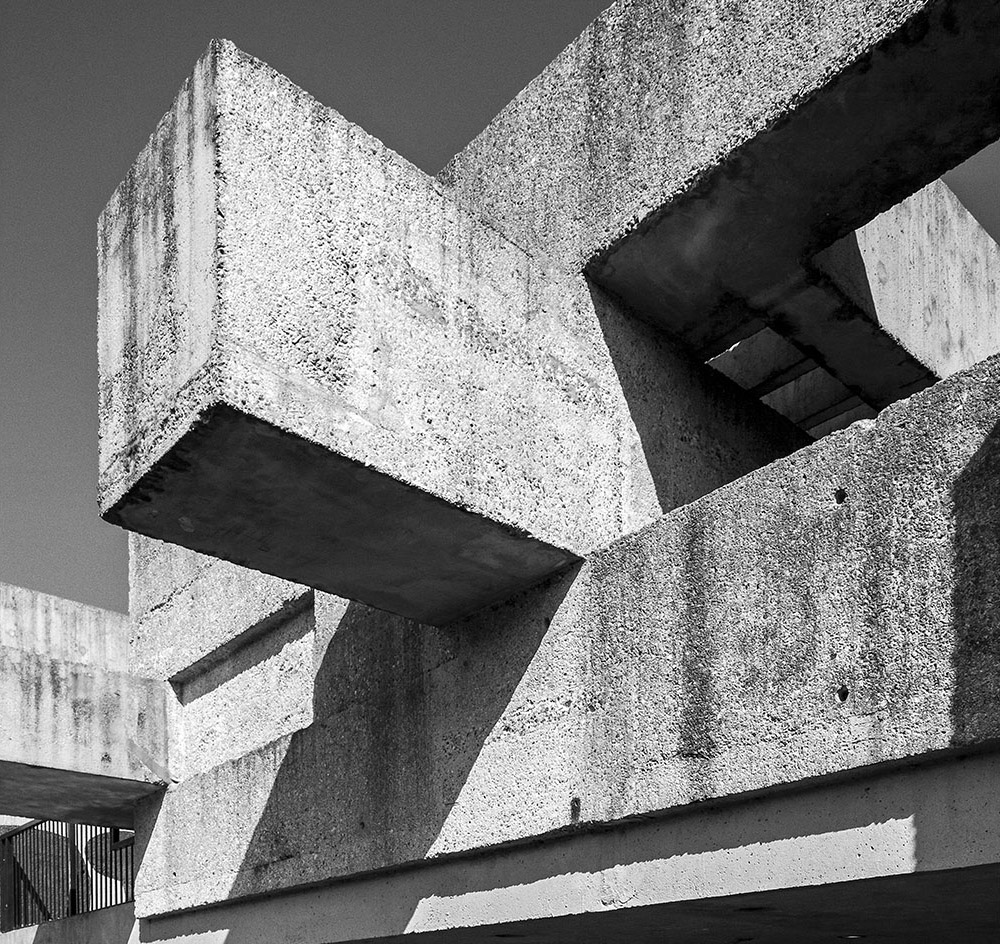
Apollo Pavilion, Peterlee, by Victor Pasmore.
In one image, Phipps has lensed Richard Serra’s Fulcrum (1987) from the ground upwards, in order to emphasise the scale of the imposing, wigwam-like structure that’s nestled between skyscrapers in London’s Broadgate. ‘That’s one of my favourite shots, Serra’s sculpture looks so powerful,’ notes Howell. Another photograph depicts Lynn Chadwick’s The Watchers (1969–70) in the leafy grounds of Roehampton University. The set of three bronzes was famously stolen in 2006, before being found and re-installed in its original location last year. ‘It’s such a shame when public sculptures are vandalised, it changes the landscape completely,’ she says. ‘I believe that all sculptures, no matter how surprising, can grow on you and become familiar.’
Howell also regards Phipps’ portrayal of Barbara Hepworth’s abstract Four-Square (Walk Through) (1966) at Churchill College, Cambridge as a focal point. The striking photograph, together with 11 other images from the show, also form the label’s 2018 calendar of the same name. ‘A calendar is great because it allows people to incorporate these works into their daily lives in a more causal way,’ she says. ‘Because art really is for everybody.’
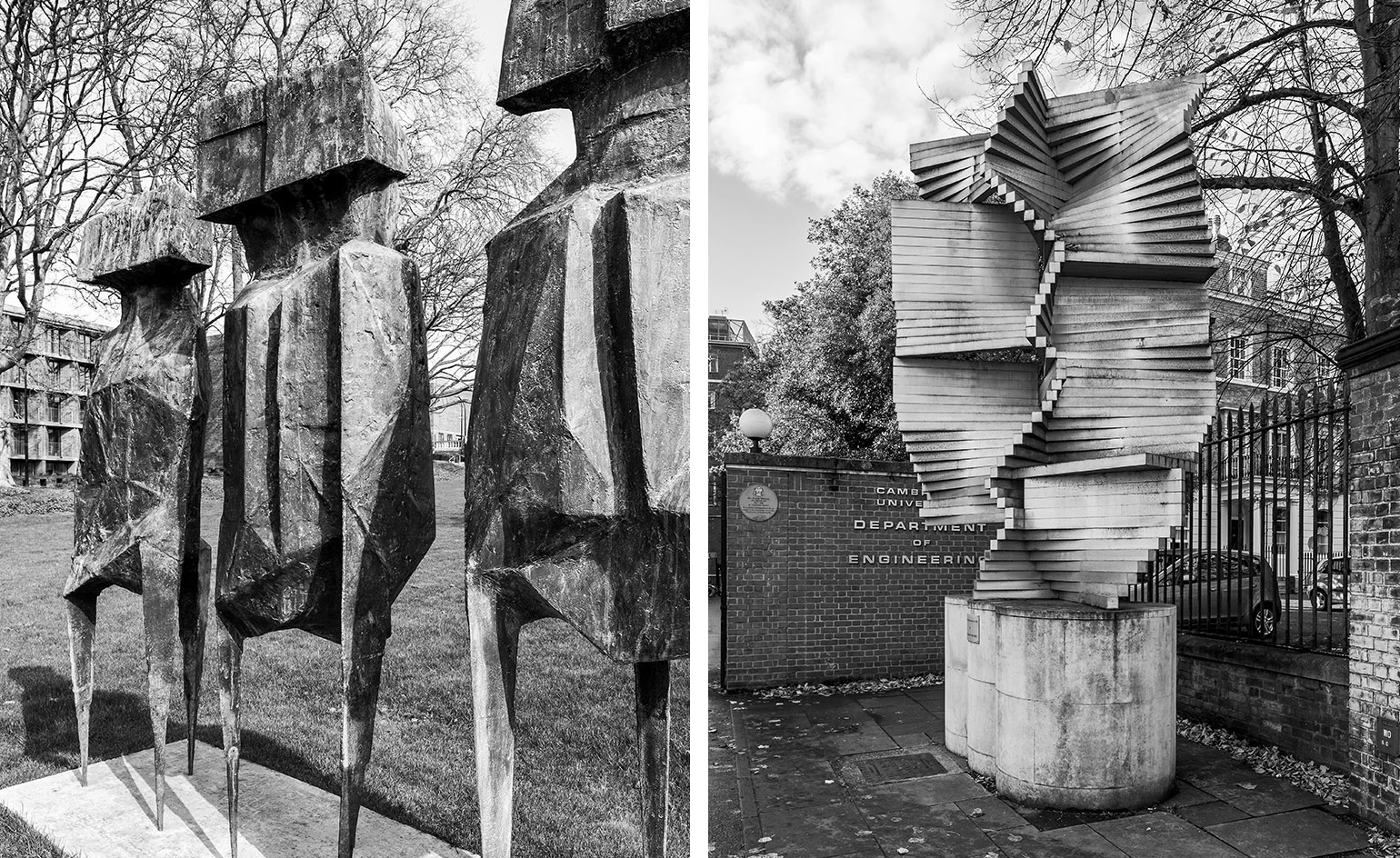
Left, The Watchers, Roehampton University, by Lynn Chadwick. Right, Oscillation, Cambridge, by Kenneth Martin.
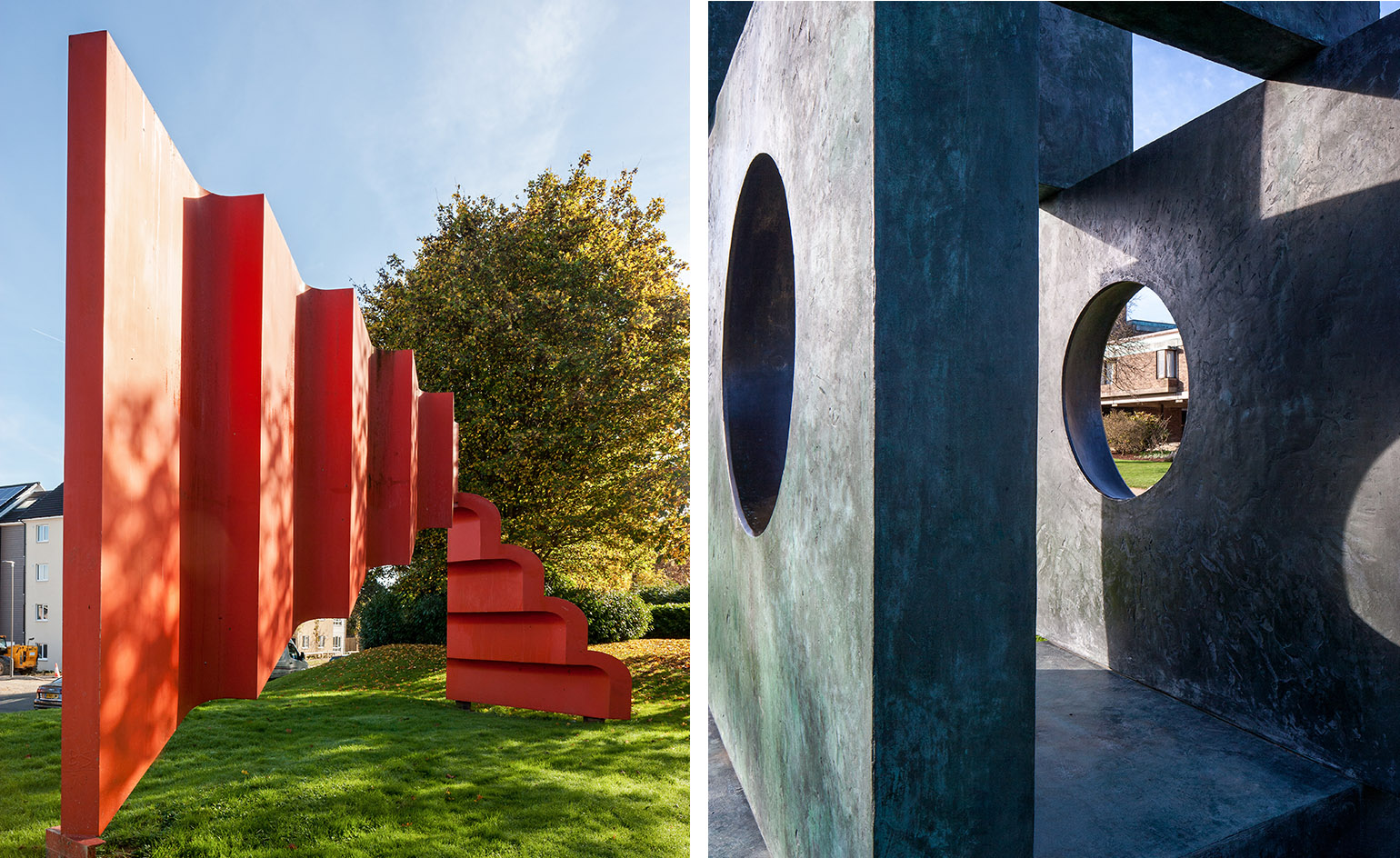
Left, 2MS Series No.1, Milton Keynes, by Bernard Schottlander. Right, Four-Square (Walk Through), Churchill College, Cambridge, by Barbara Hepworth.
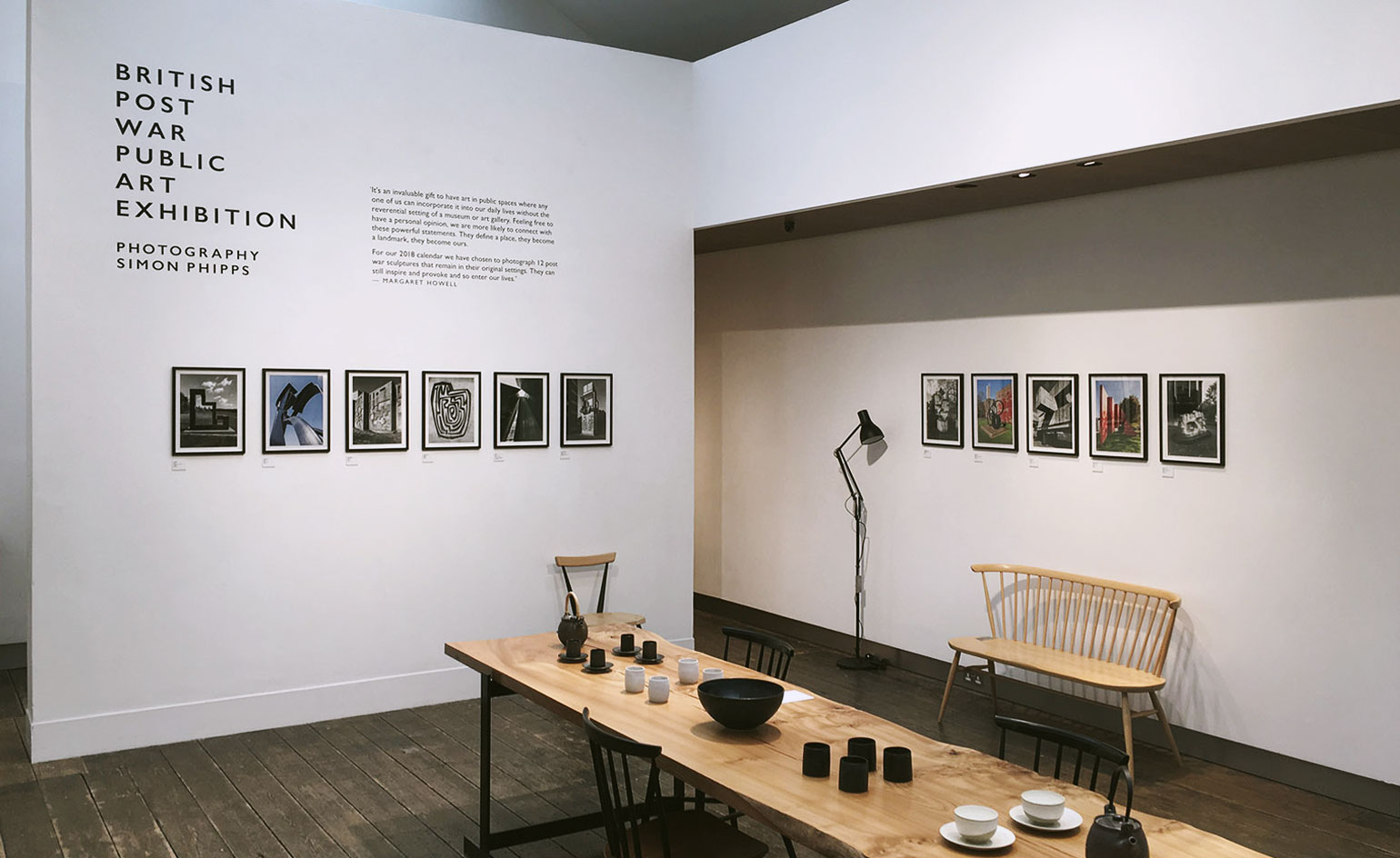
Installation view of 'British Post-War Public Art’ at Margaret Howell's Wigmore Street store
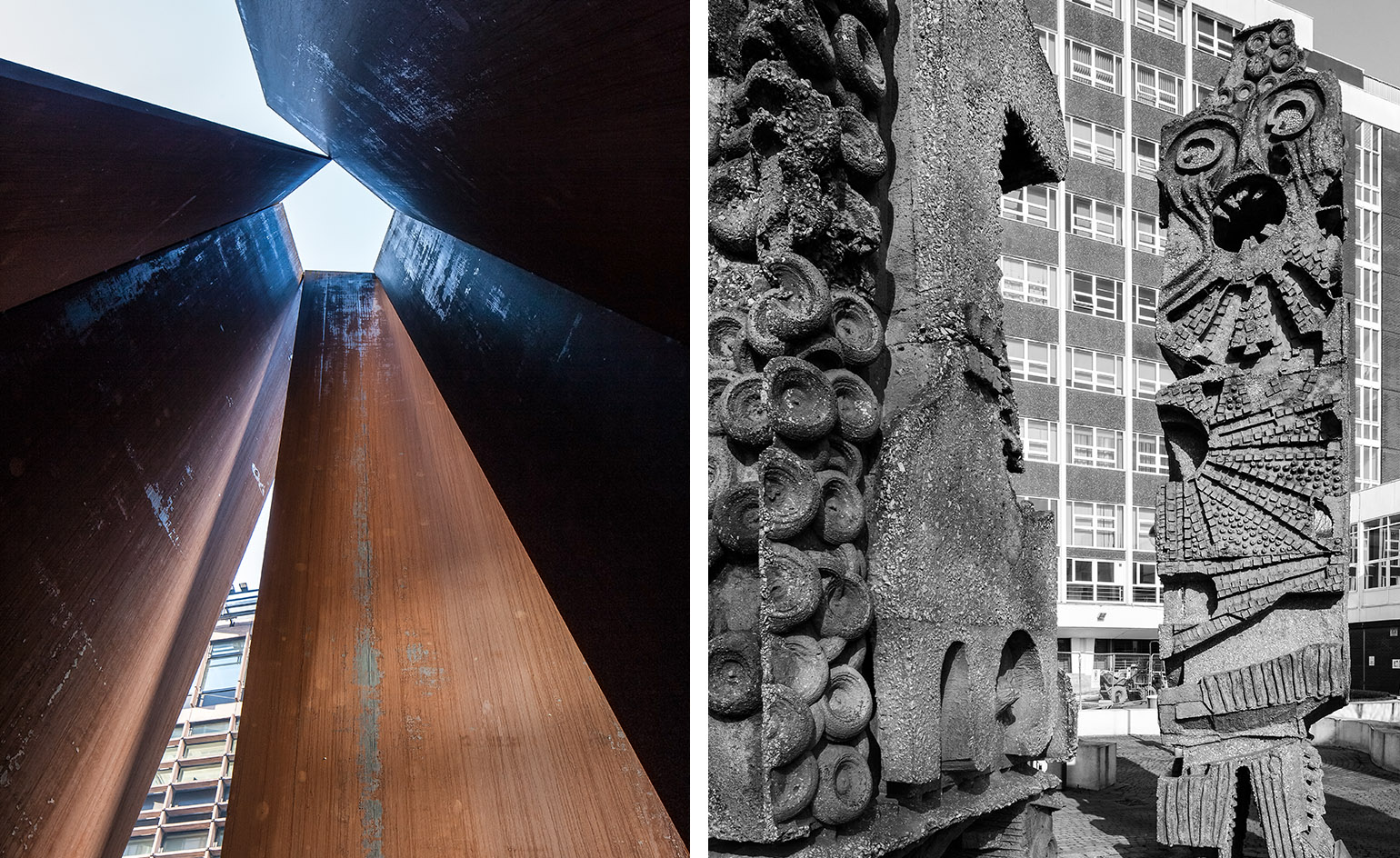
Left, Fulcrum, Broadgate, London, by Richard Serra. Right, Minutemen, Salford, by William Mitchell.
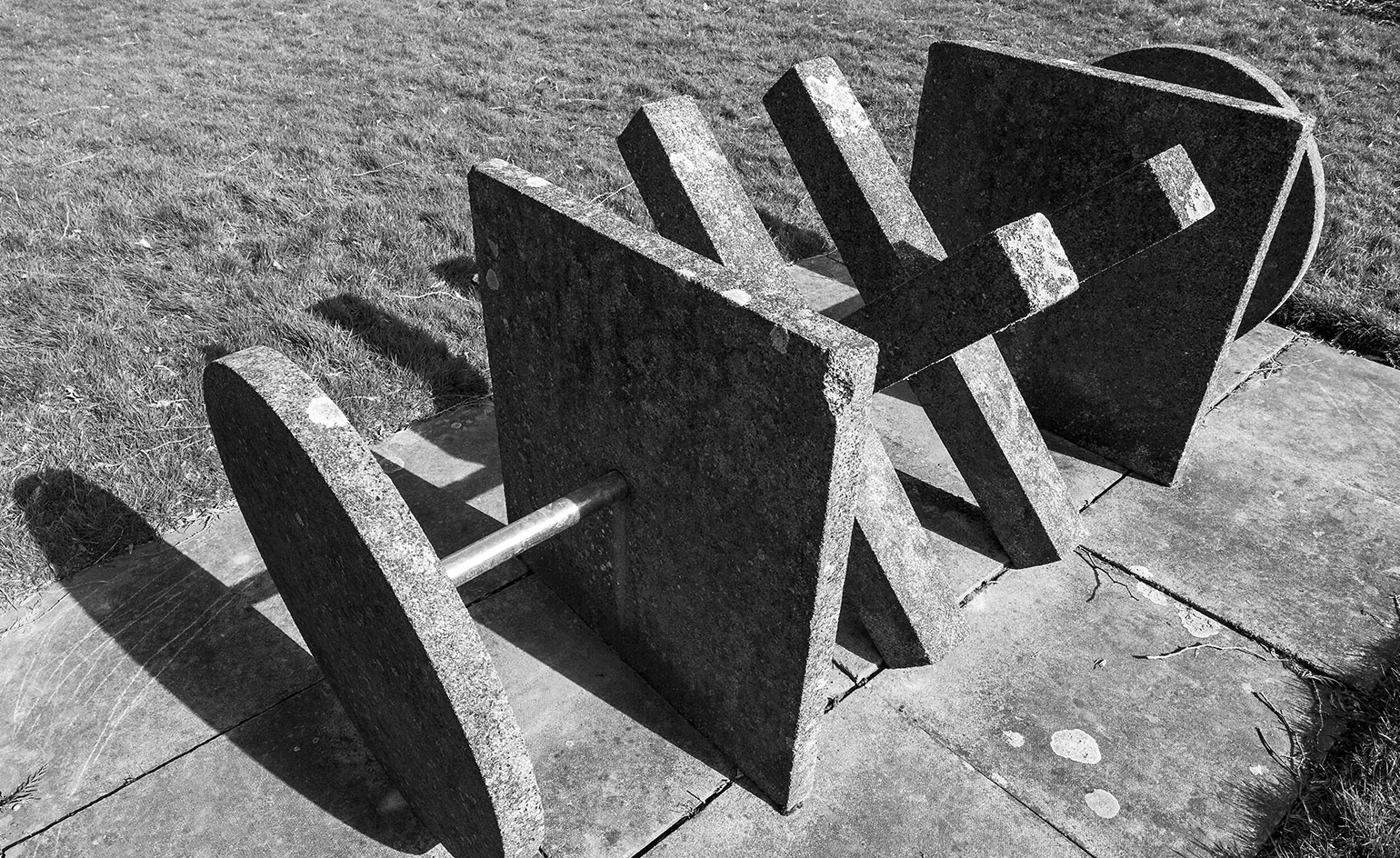
Declaration, Beaumanor Hall, Leicestershire, by Phillip King
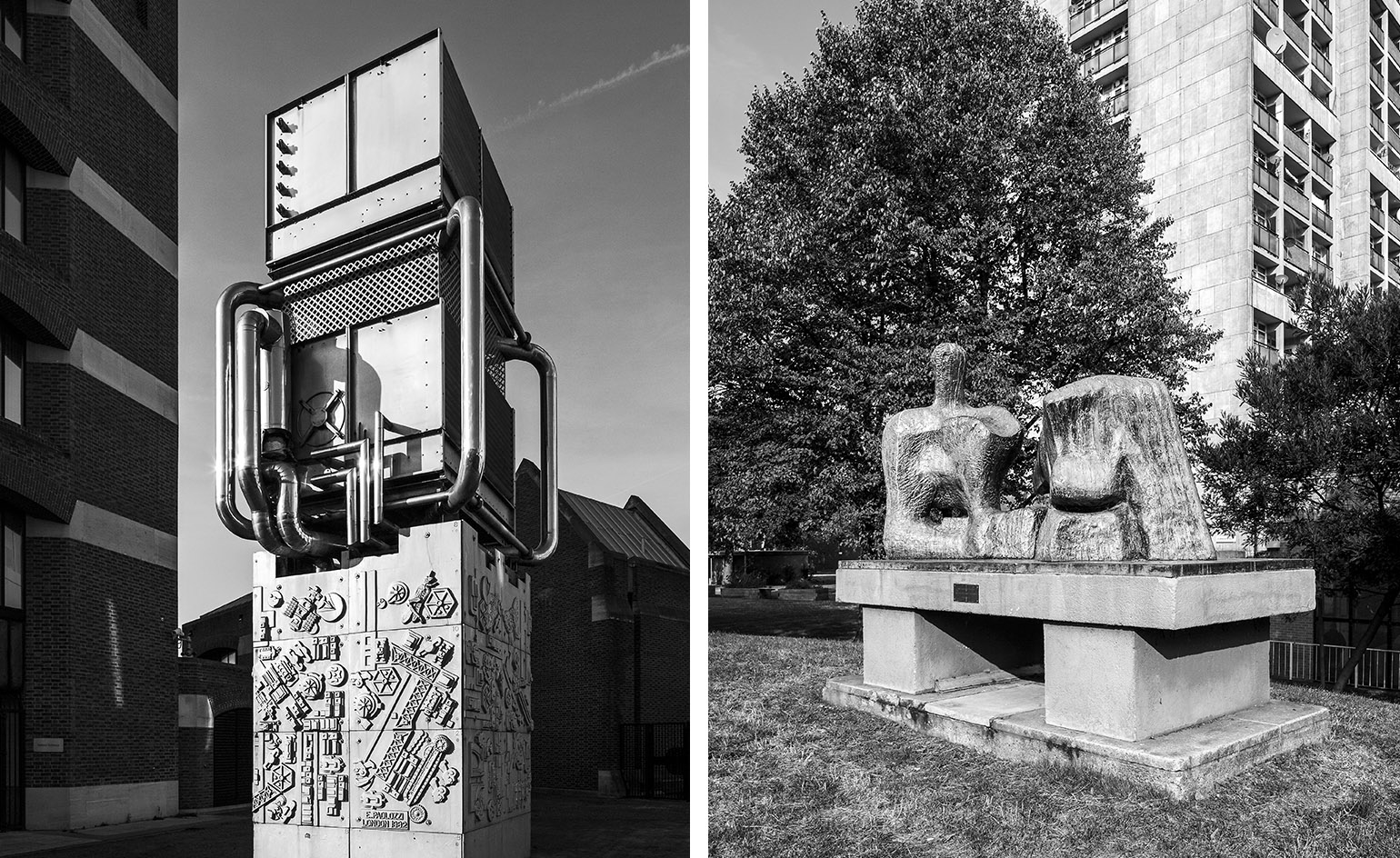
Left, Pimlico Cooling Tower, London, by Eduardo Paolozzi. Right, Two-Piece Reclining Figure No. 3, Brandon Estate, London, by Henry Moore.
INFORMATION
‘British Post-War Public Art’ is on view until 22 October. For more information, visit the Magaret Howell website
ADDRESS
34 Wigmore Street
London
WIU 2RS
Wallpaper* Newsletter
Receive our daily digest of inspiration, escapism and design stories from around the world direct to your inbox.
-
 All-In is the Paris-based label making full-force fashion for main character dressing
All-In is the Paris-based label making full-force fashion for main character dressingPart of our monthly Uprising series, Wallpaper* meets Benjamin Barron and Bror August Vestbø of All-In, the LVMH Prize-nominated label which bases its collections on a riotous cast of characters – real and imagined
By Orla Brennan
-
 Maserati joins forces with Giorgetti for a turbo-charged relationship
Maserati joins forces with Giorgetti for a turbo-charged relationshipAnnouncing their marriage during Milan Design Week, the brands unveiled a collection, a car and a long term commitment
By Hugo Macdonald
-
 Through an innovative new training program, Poltrona Frau aims to safeguard Italian craft
Through an innovative new training program, Poltrona Frau aims to safeguard Italian craftThe heritage furniture manufacturer is training a new generation of leather artisans
By Cristina Kiran Piotti
-
 ‘Humour is foundational’: artist Ella Kruglyanskaya on painting as a ‘highly questionable’ pursuit
‘Humour is foundational’: artist Ella Kruglyanskaya on painting as a ‘highly questionable’ pursuitElla Kruglyanskaya’s exhibition, ‘Shadows’ at Thomas Dane Gallery, is the first in a series of three this year, with openings in Basel and New York to follow
By Hannah Silver
-
 The art of the textile label: how British mill-made cloth sold itself to Indian buyers
The art of the textile label: how British mill-made cloth sold itself to Indian buyersAn exhibition of Indo-British textile labels at the Museum of Art & Photography (MAP) in Bengaluru is a journey through colonial desire and the design of mass persuasion
By Aastha D
-
 Artist Qualeasha Wood explores the digital glitch to weave stories of the Black female experience
Artist Qualeasha Wood explores the digital glitch to weave stories of the Black female experienceIn ‘Malware’, her new London exhibition at Pippy Houldsworth Gallery, the American artist’s tapestries, tuftings and videos delve into the world of internet malfunction
By Hannah Silver
-
 Ed Atkins confronts death at Tate Britain
Ed Atkins confronts death at Tate BritainIn his new London exhibition, the artist prods at the limits of existence through digital and physical works, including a film starring Toby Jones
By Emily Steer
-
 Tom Wesselmann’s 'Up Close' and the anatomy of desire
Tom Wesselmann’s 'Up Close' and the anatomy of desireIn a new exhibition currently on show at Almine Rech in London, Tom Wesselmann challenges the limits of figurative painting
By Sam Moore
-
 A major Frida Kahlo exhibition is coming to the Tate Modern next year
A major Frida Kahlo exhibition is coming to the Tate Modern next yearTate’s 2026 programme includes 'Frida: The Making of an Icon', which will trace the professional and personal life of countercultural figurehead Frida Kahlo
By Anna Solomon
-
 A portrait of the artist: Sotheby’s puts Grayson Perry in the spotlight
A portrait of the artist: Sotheby’s puts Grayson Perry in the spotlightFor more than a decade, photographer Richard Ansett has made Grayson Perry his muse. Now Sotheby’s is staging a selling exhibition of their work
By Hannah Silver
-
 From counter-culture to Northern Soul, these photos chart an intimate history of working-class Britain
From counter-culture to Northern Soul, these photos chart an intimate history of working-class Britain‘After the End of History: British Working Class Photography 1989 – 2024’ is at Edinburgh gallery Stills
By Tianna Williams